If you missed Acid Dye Part 1, it contains the basic instructions for acid dyeing. Basic overview: Food colors are acid dyes, you need acid (vinegar), for them to chemically react with fibers. They are fun, easy and safe dyes to use with kids, but only work on protein fibers.)
One of the neat things about different types of dyes is that depending on their chemical structure they like to bond to different kinds of fibers. In forensics this is one of the things they use to determine what kind of fibers fabrics are made of (MAKE Forensics Lab). Acid dyes like to bond to protein fibers like wool and silk. (And nylon curiously enough.) They don’t like to bond to cellulose fibers like cotton. This is one of the fiber demonstrations from my class, and I think it’s pretty neat.
To do this demonstration you need some white cotton and wool (about 10 wraps around your hand is great), food coloring, vinegar and some glass jars.
First the yarn needs to be presoaked in the vinegar for about half an hour. To keep it from getting tangled wrap it around your hand and tie it in at least one spot.
Next, take your two jars, fill them with water and add a drop of food coloring.
Then squeeze out your yarns from the vinegar soak and in one jar put your cotton and in the other your wool.
Heat your jars in the microwave (or pan of simmering water) until one of them has gone clear. This will be the jar with the wool in it.
The colored yarn may trick you into thinking there is still color in the water, but when you pull the two yarns out you will see that the wool yarn has sucked all the dye out of the water, and the cotton yarn has not. Neat!
Finally, rinse the yarn out. You will see that the cotton is lightly stained, while the wool is quite well and permanently dyed.
I think the coolest part is the clear water left behind by the wool. This demonstrates that the wool is not just sitting and soaking in some paint. The dye molecules are chemically bonding to the wool, being pulled out of the solution and lowering the concentration of dye in the water until it reaches zero. (Unless you add more color than the acid soaked fiber can bond with, oops!.)
Further chemistry reading:
How Acid Dye Works from Dharma Trading
Dyeing 101: Know Your Dyes – What’s the Difference Between an Acid Dye and a Reactive Dye? from Gnomespun
Next up, part 3, our art project from last week involving acid dyes.

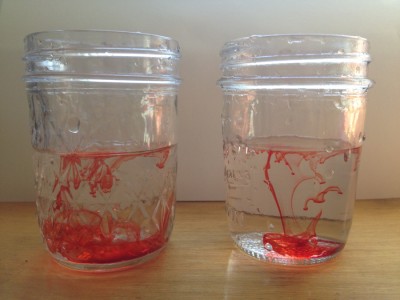
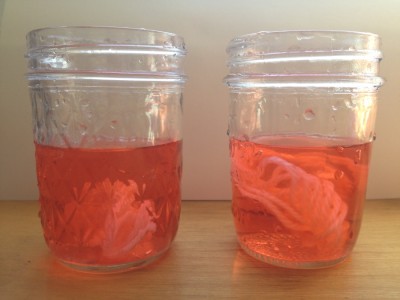
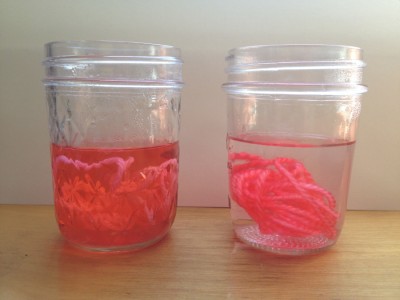
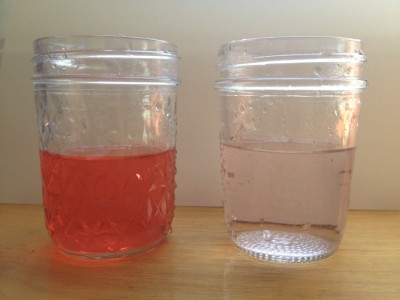
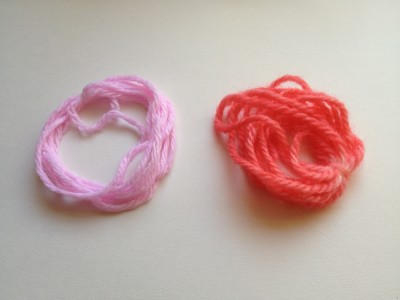

2 Comments
Add Yours →Love this demonstration of the science that is going on! The clear water left behind by wool really fascinates me. I understand the scientific reason for it, but it still feels like magic.
Yes, it feels very much like magic! That is one of the reasons that I like it!